Common Mistakes Beginners Make When Choosing Binoculars- Avoid Costly Errors!
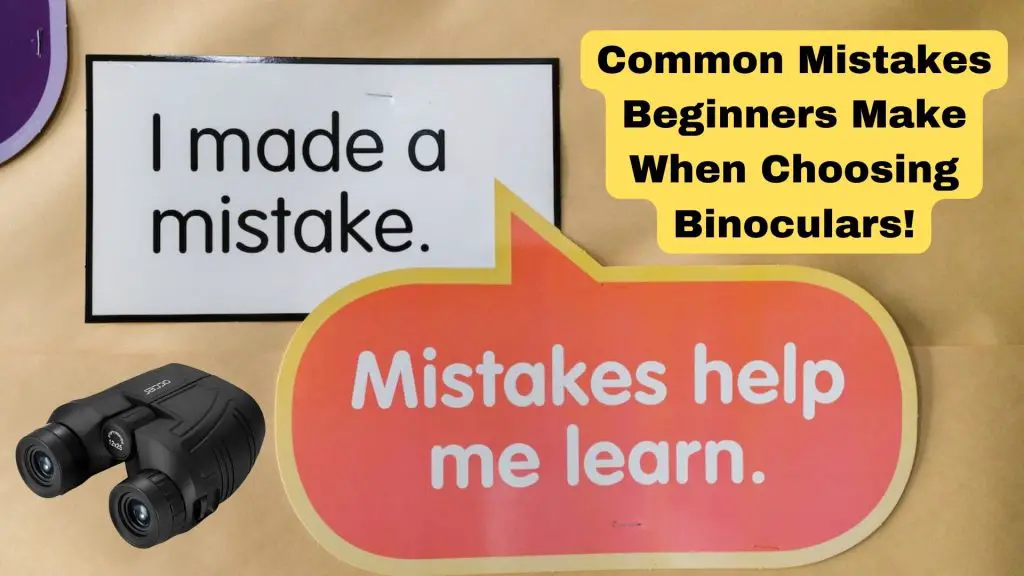
Hey there, budding explorer! If you’re new to the world of binoculars, we’re here to help you avoid some common mistakes.
Binoculars are those cool tools that let you see things far away as if they were up close. They’re super handy for bird watching, stargazing, or just enjoying nature.
But before you rush to buy a pair, it’s important to know the common blunders beginners make. We want to save you from wasting your money or ending up with binoculars that don’t work well.
Picking the right binoculars can be tricky, especially when you’re just starting out. There are lots of confusing terms and options to choose from. But don’t worry! We’re here to make things easier for you.
In this blog, we’ll talk about the mistakes people often make when choosing binoculars.
By the end, you’ll have all the knowledge you need to pick the perfect binoculars for your adventures, without spending too much.
So, are you ready to learn the secrets of picking the right binoculars?
Let’s get started together and make sure you avoid the common errors, so you can see the world with clarity and wonder!
1. Lack of Research and Understanding
Failure to research and understand different types and features of binoculars
When it comes to choosing binoculars, one of the most common mistakes beginners make is diving into the purchasing process without conducting proper research.
Binoculars come in various types and models, each designed for specific purposes and activities.
By neglecting to research and understand these differences, beginners risk ending up with binoculars that do not meet their specific needs.
There are different types of binoculars, such as compact binoculars, birding binoculars, hunting binoculars, astronomy binoculars, and marine binoculars, to name a few.
Each type is specifically optimized for particular activities, offering features that enhance the viewing experience.
By understanding the various types, beginners can narrow down their choices and find the binoculars that align with their interests.
2. Importance of understanding binocular specifications (e.g., magnification, objective lens size, the field of view)
Beyond the different types, binoculars come with a range of specifications that greatly impact their performance.
Magnification, objective lens size, and field of view are among the crucial specifications that beginners should pay attention to.
Magnification refers to the degree of enlargement provided by the binoculars.
It is often the first thing beginners focus on, mistakenly believing that higher magnification is always better.
Objective lens size is another important specification to consider.
The size of the objective lenses affects the amount of light that enters the binoculars, thus impacting the brightness and clarity of the image.
Larger objective lenses allow more light to enter, resulting in brighter images, especially in low-light conditions.
However, larger objective lenses also make the binoculars heavier and bulkier. Beginners need to find a balance between portability and the desired level of brightness.
Field of view refers to the width of the area visible through the binoculars at a specific distance.
A wider field of view allows for easier tracking of fast-moving objects or observing a broader scene. Beginners often overlook the significance of field of view and mistakenly prioritize magnification alone.
However, a narrow field of view can limit the overall observation experience, making it harder to locate and follow subjects.
Understanding these specifications and their implications is crucial for beginners.
It allows them to make informed decisions and choose binoculars that align with their purpose.
Let’s understand the mistakes pertaining to Magnification, Objective lens size and field of view in detail below:

3. Overemphasizing Magnification
The Misconception that higher magnification is always better
When beginners set out to choose binoculars, one of the most common mistakes they make is overemphasizing magnification.
There is a widespread misconception that higher magnification is always better, as it allows for closer and more detailed views of distant objects.
While it is true that magnification plays a significant role in binoculars, it is essential to understand that higher magnification is not always the best choice.
The desire for higher magnification often stems from the belief that it will provide a superior viewing experience.
Beginners may think that greater magnification means more details and a clearer image.
However, it is important to remember that binoculars are handheld optical instruments, and higher magnification brings along some potential drawbacks.
Potential drawbacks of high magnification (e.g., shaky image, reduced field of view)
One of the primary issues associated with high magnification is the increased sensitivity to hand movements.
When using binoculars with higher magnification, even the slightest hand tremor can become exaggerated, resulting in a shaky image.
This can make it challenging to maintain a steady view and may cause frustration, particularly for beginners who are not accustomed to holding binoculars steadily for extended periods.
Another drawback of high magnification is the reduced field of view.
As magnification increases, the field of view narrows. This means that you will be able to see a smaller portion of the scene or subject you are observing.
This reduction in the field of view can be problematic, especially when it comes to tracking moving objects.
Binoculars with high magnification may make it harder to follow fast-moving birds, animals, or sports events, as the narrower field of view limits the area visible through the binoculars.
Additionally, higher magnification binoculars often have a shorter depth of field.
Depth of field refers to the range of distances in which objects remain in focus.
With higher magnification, the depth of field becomes shallower, making it more challenging to keep objects in focus when they are at different distances.
This can be frustrating for beginners who want to observe various objects at different distances without constantly adjusting the focus.
Opting for a moderate magnification level allows for a more comfortable viewing experience, reducing the impact of hand movements and providing a wider field of view.
Binoculars with magnification levels of 8x or 10x are popular choices for beginners as they offer a good balance between magnification and stability.
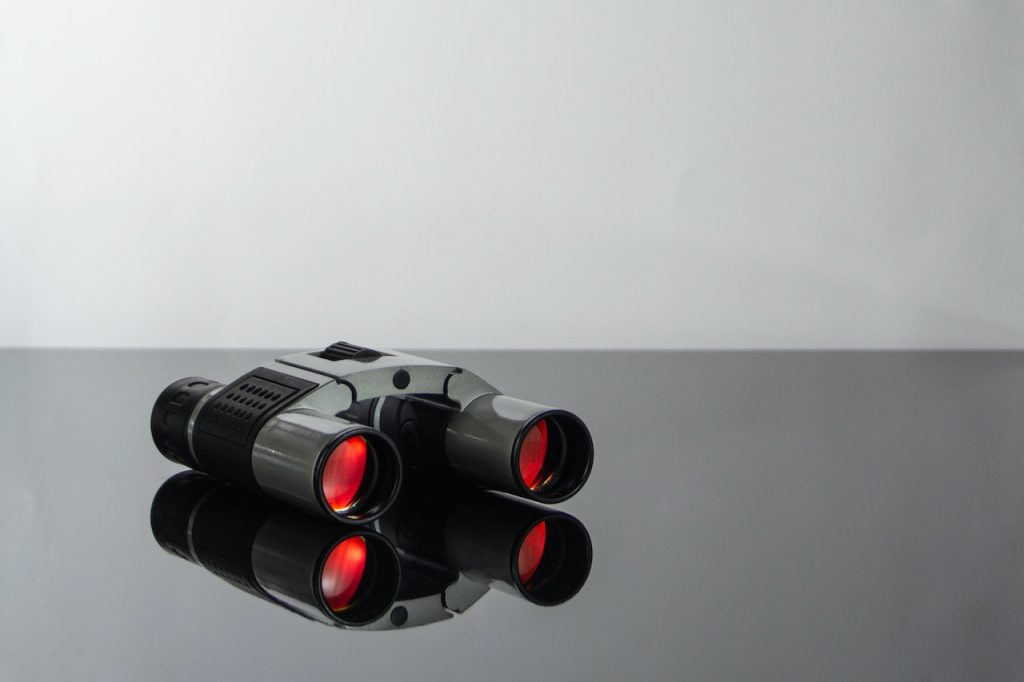
4. Ignoring The Importance of Objective Lens Size
Objective lens size and its Impact on Brightness and Low-Light Performance
The objective lenses are the larger lenses located at the front of the binoculars, opposite the eyepieces.
The size of these lenses plays a significant role in determining the brightness and low-light performance of the binoculars.
The objective lens size is measured in millimetres and is typically denoted by the second number in the binocular specifications.
For example, in a 10×42 binocular, the objective lens size is 42mm.
The larger the objective lens, the more light it can gather and transmit to your eyes, resulting in brighter and clearer images.
The importance of objective lens size becomes particularly evident in low-light conditions, such as dawn, dusk, or when observing in heavily shaded areas.
In these situations, having larger objective lenses can make a significant difference in the visibility and clarity of the observed objects.
Binoculars with larger objective lenses excel at capturing available light, allowing you to see more details and colors even when the lighting conditions are less favorable.
The balance between portability and larger objective lenses
While larger objective lenses offer better brightness and low-light performance, it is crucial to strike a balance between these advantages and the portability of the binoculars.
Larger objective lenses result in a bulkier and heavier design, which can impact the comfort and convenience of using binoculars, especially for extended periods or when traveling.
For beginners, it is essential to consider their purpose and individual preferences.
If the primary purpose is birdwatching or observing distant wildlife during the daytime, a binocular with objective lenses ranging from 32mm to 42mm would typically suffice.
These sizes offer a good balance between brightness and portability.
Binoculars with 42mm objective lenses are a popular choice for birdwatching enthusiasts, as they provide adequate brightness while still being manageable in terms of weight and size.
On the other hand, if your interests lie in stargazing or observing celestial objects, larger objective lenses, such as 50mm or above, are recommended.
These larger sizes allow for optimal light gathering, enhancing the visibility of celestial objects during nighttime observations.
However, it is important to keep in mind that binoculars with larger objective lenses tend to be heavier and may require additional support, such as a tripod, for steady viewing.
It is crucial for beginners to evaluate their priorities when it comes to objective lens size.
Consider the activities you will be primarily engaged in, the lighting conditions you expect to encounter, and the level of portability that suits your needs.
By finding the right balance between objective lens size and portability, beginners can select binoculars that offer excellent brightness and low-light performance without compromising comfort and convenience.
5. Disregarding The Field of View
Field of view and its significance in observing and tracking subjects

When beginners choose binoculars, one crucial aspect that is often disregarded is the field of view.
Field of view refers to the width of the area visible through the binoculars at a specific distance. It is typically expressed as either the width in feet at 1,000 yards or the angle in degrees.
The field of view plays a significant role in the observing experience, particularly when it comes to tracking subjects or scanning a wide area.
A wider field of view allows you to see a broader scene or subject, making it easier to locate and track moving objects.
Whether you are birdwatching, wildlife observing, or even enjoying a sports event, a wider field of view enhances your ability to follow the action smoothly.
For example, imagine you are birdwatching in a forest. A binocular with a wide field of view would allow you to observe the surrounding trees and foliage, making it easier to spot and track birds as they flit through the branches.
On the other hand, a narrow field of view would restrict your vision to a smaller area, making it more challenging to locate and keep up with the birds’ movements.
Binoculars with a moderate magnification level, combined with a wider field of view, are often a better choice for beginners.
If you plan to observe fast-moving subjects or wide landscapes, opt for binoculars with a wider field of view.
This will enable you to enjoy a more immersive and rewarding viewing experience, allowing you to track subjects smoothly and capture the full essence of the scene.
6. Neglecting Optical Quality and Coatings
Importance of optical quality for clarity and brightness
Optical quality refers to the precision and quality of the lenses and prisms used in binocular construction. It directly influences the clarity, brightness, and overall performance of the binoculars.
Optical quality plays a significant role in the sharpness and resolution of the images you observe through the binoculars.
High-quality lenses and prisms are designed to minimize optical aberrations such as chromatic aberration and distortion, resulting in clear and crisp images.
On the other hand, binoculars with poor optical quality may produce images that are blurry or lack fine details, compromising the observing experience.
In addition to clarity, optical quality also impacts the brightness of the image.
High-quality lenses are designed to transmit light efficiently, allowing for a brighter and more vibrant image.
This is especially important in low-light conditions or when observing distant objects.
Binoculars with superior optical quality can provide a more immersive and enjoyable viewing experience, as they bring out the subtle details and colors in the observed subjects.
Different coatings (e.g., anti-reflective coatings) and their effects on image quality
Anti-reflective coatings are commonly applied to the lenses of binoculars. These coatings help to reduce the amount of light that is lost due to reflection on the lens surfaces.
By minimizing reflections, more light is transmitted through the binoculars, leading to brighter images with improved contrast.
Anti-reflective coatings are particularly beneficial in situations where there is bright sunlight or when observing in low-light conditions.
Other coatings, such as phase correction coatings, are applied to the prisms inside the binoculars.
These coatings correct phase shifts that can occur as light passes through the prisms, ensuring that the colors are accurately aligned.
Phase correction coatings help to deliver sharper and more accurate images, especially when observing subjects with fine details or contrasting colors.
Lens coatings are typically described using terms like fully multi-coated, multi-coated, or fully coated, indicating the extent of the coatings applied to the lenses.
Fully multi-coated lenses have multiple layers of coatings on all air-to-glass surfaces, providing the highest level of light transmission and image quality.
Beginners should aim for binoculars with fully multi-coated or multi-coated lenses, as they offer superior optical performance.
7. Buying Based on Price Alone
The misconception that higher-priced binoculars are always superior
There is a prevailing misconception that higher-priced binoculars are always superior in terms of quality and performance.
This assumption that higher-priced binoculars are always superior stems from the belief that a higher price tag reflects better craftsmanship, advanced technologies, and superior image quality.
While there may be some truth to this, it is important to note that not all features and specifications are essential for every user.
Paying a premium for features that you may not necessarily need or appreciate can result in overspending and dissatisfaction with your purchase.
Considering the overall value and balancing the budget with quality
Rather than solely focusing on the price, beginners should consider the overall value and balance their budget with the desired quality and features.
It is crucial to evaluate the specific requirements of your purpose of using binoculars and, then prioritize the features that are most important to you.
Consider the optical quality, such as the clarity, brightness, and sharpness of the image, as well as the durability and comfort of the binoculars.
Look for reputable brands that offer a good balance between performance and price, as they often have models that cater to a wide range of budgets.
Reading reviews and seeking recommendations from experienced users or professionals can also provide valuable insights into the performance and value of different binocular models.
Don’t hesitate to test out different binoculars in person, if possible, to get a feel for their ergonomics and image quality.
Additionally, consider the long-term investment and potential cost of ownership.
While a lower-priced binocular may seem appealing initially, it may not withstand rigorous use or provide the desired level of performance over time.
In contrast, investing in a higher-quality binocular that is built to last may save you money in the long run, as it will require fewer repairs or replacements.
It is also worth exploring options in different price ranges and comparing their specifications and features.
You may find that there are mid-range or budget-friendly binoculars that offer excellent performance and value for your specific needs.
By evaluating the overall value rather than fixating on the price alone, beginners can make a more informed decision that aligns with their budget and expectations.
8. Ignoring Ergonomics and Comfort

The significance of ergonomic design for prolonged use
When beginners choose binoculars, they often overlook the importance of ergonomic design and comfort.
While optical performance is crucial, binoculars that are not ergonomically designed can quickly become uncomfortable to use, especially during prolonged observation sessions.
Ergonomics refers to the design and arrangement of the binoculars’ components to ensure comfort and ease of use.
A well-designed ergonomic binocular can enhance the overall observing experience by reducing fatigue, providing a secure grip, and allowing for extended periods of comfortable viewing.
Ignoring ergonomics can also lead to discomfort and strain on the hands, arms, and eyes.
This can be particularly problematic when observing for extended periods or when engaging in activities such as birdwatching, wildlife tracking, or attending sporting events.
Additionally, uncomfortable eyecups or inadequate eye relief can cause eye strain or discomfort, limiting the enjoyment of the observing experience.
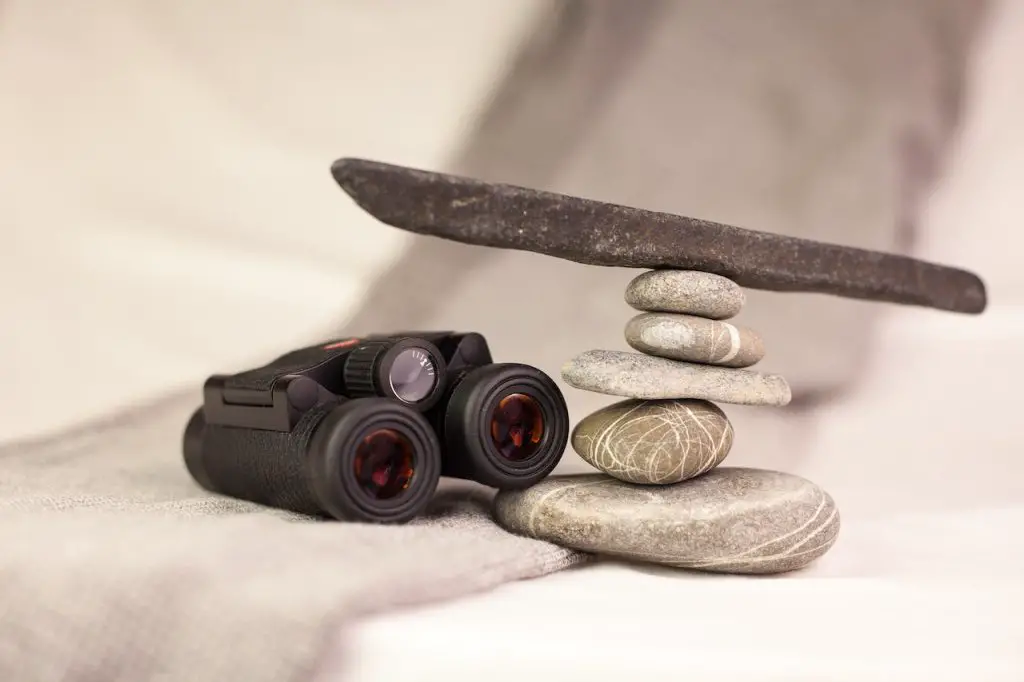
Considering factors such as weight, grip, and eye relief
To ensure a comfortable and enjoyable observing experience, beginners should consider several factors related to ergonomics when choosing binoculars.
Weight:
The weight of the binoculars plays a significant role in comfort, especially during prolonged use.
Heavy binoculars can strain the hands and neck, making it difficult to hold steady or carry for long periods.
Beginners should find a balance between optical performance and weight, opting for binoculars that are lightweight and manageable for their intended activities.
Grip:
The grip of the binoculars is crucial for stability and ease of handling.
Look for binoculars with a textured and non-slip grip that fits comfortably in your hands. This will ensure a secure and stable hold, even in wet or slippery conditions.
Eye Relief:
Eye relief refers to the distance between the eyepiece and your eyes when you observe through the binoculars.
It is especially important for those who wear glasses, as sufficient eye relief allows for comfortable viewing without the need to remove your glasses.
Binoculars with adjustable eyecups or longer eye relief are ideal for accommodating different users and ensuring a comfortable viewing experience.
Focus Knobs and Controls:
Consider the placement and ease of use of the focus knob and other controls.
These should be easily accessible and adjustable, allowing for quick and precise focusing without straining your fingers or losing sight of your subject.
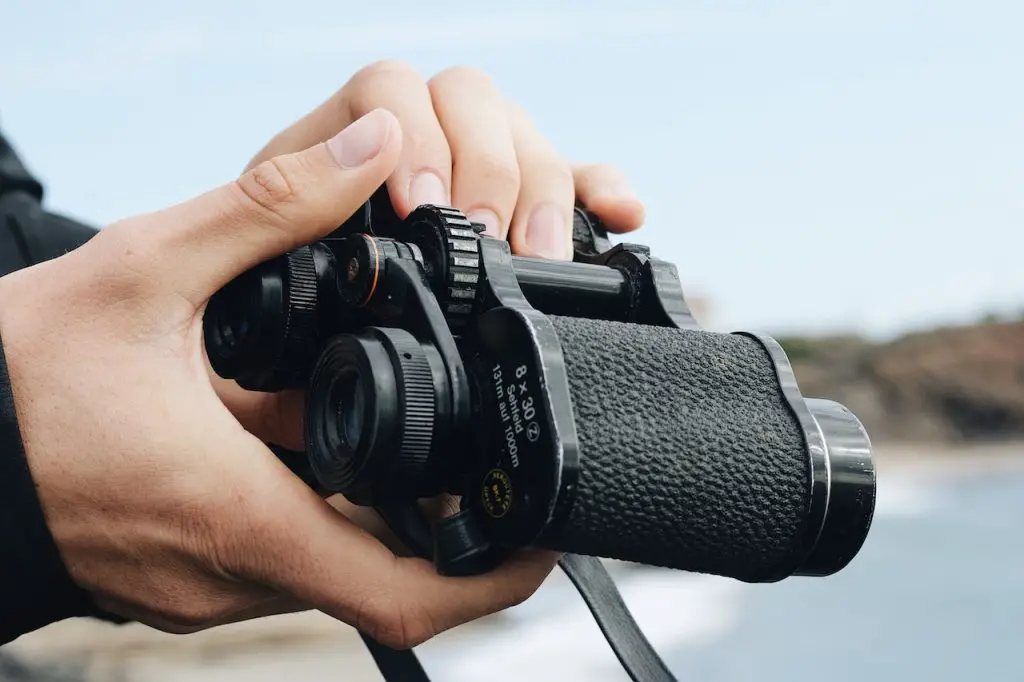
Taking the time to physically handle different binocular models before making a purchase can greatly help in assessing their ergonomics and comfort.
Try holding and using the binoculars as you would during actual observation. Pay attention to how they feel in your hands, the ease of adjusting focus, and the comfort of the eyecups against your eyes.
A well-designed ergonomic binocular will allow for longer periods of use without discomfort or fatigue, enhancing overall satisfaction and immersion in the observed world.
9. Overlooking Durability, Waterproofing & Fogproofing
The importance of durability for outdoor and rugged use
When beginners choose binoculars, they often overlook the importance of durability, especially if they plan to use them in outdoor or rugged environments.
Durability is a crucial factor to consider, as binoculars that are not built to withstand the demands of outdoor activities can easily get damaged, affecting their performance and longevity.
Outdoor activities such as hiking, wildlife observation, or even boating can expose binoculars to rough handling, impacts, and environmental elements.
Without proper durability, binoculars may become prone to damage, compromising their functionality and potentially rendering them unusable.
Durability in binoculars is determined by factors such as the quality of materials, construction, and overall build quality.
High-quality binoculars often feature rugged and robust designs, utilizing materials such as durable metals and reinforced polymers.
These materials are chosen for their ability to withstand impacts, resist corrosion, and provide long-lasting performance.
By choosing durable binoculars, beginners can have peace of mind knowing that their investment is protected.
They can confidently take their binoculars on outdoor adventures, knowing that they can withstand the rigors of the environment and continue to provide reliable performance.
Understanding waterproofing & fog proofing and its benefits for different environments
Waterproofing is a feature that protects binoculars from water damage, making them suitable for use in wet environments such as rain, fog, or near bodies of water.
Waterproof and fog proof binoculars are sealed with O-rings and filled with nitrogen or argon gas, which prevents moisture from entering the internal components.
This feature not only protects the binoculars from rain or accidental submersion but also helps to prevent internal fogging, ensuring clear and unobstructed views.
Waterproofing is beneficial for various outdoor activities.
Whether you’re hiking in the rain, observing wildlife near wetlands, or simply want the peace of mind of having weather-resistant binoculars, waterproofing is a crucial feature to consider.
Additionally, waterproof & fogroof binoculars tend to be more resistant to other environmental elements such as dust and debris.
This makes them ideal for dusty or sandy environments, as they can withstand the harsh conditions without compromising their performance.
Even if you don’t anticipate using your binoculars in wet conditions, it is still advisable to opt for waterproof models.
Accidental exposure to water can occur, and having waterproof binoculars ensures that they remain protected and functional in unexpected situations.
10. Not Trying Before Buying
The importance of hands-on experience and trying binoculars before purchasing
While researching online and reading reviews can provide valuable information, nothing compares to the hands-on experience of trying binoculars in person.
Trying before buying allows you to assess the comfort, ergonomics, and optical performance of the binoculars, ensuring that they meet your specific needs and preferences.
By trying binoculars before buying, you can get a feel for their weight, balance, and overall comfort in your hands.
This is especially important if you plan to use them for extended periods or engage in activities that require steady observation, such as birdwatching or wildlife tracking.
The physical sensation of holding and using the binoculars will help you determine if they are a good fit for your hands and if the controls and focus knobs are easy to use.
Utilizing store displays, demonstrations, or borrowing binoculars from friends
To try binoculars before making a purchase, beginners can take advantage of store displays, demonstrations, or borrow binoculars from friends or fellow enthusiasts.
Many specialized stores or outdoor retailers have display models available for customers to test. This allows you to handle the binoculars, adjust the focus, and evaluate their comfort and ergonomics.
When trying binoculars in a store, take your time and explore different models.
Compare the weight, grip, and ease of use among different brands and models. Pay attention to how the binoculars feel against your face and if the eye relief suits your needs, especially if you wear glasses.
In addition to store displays, attending trade shows, nature expos, or birdwatching festivals can provide opportunities to try out a wide range of binoculars.
These events often have knowledgeable staff or representatives who can offer guidance and answer any questions you may have.
Another option is to borrow binoculars from friends, fellow enthusiasts, or local birding groups.
This allows you to test the binoculars in real-life conditions and evaluate their performance in the field.
It is a great way to gain insights and personal experiences with different models before making a final decision.
By trying binoculars before buying, beginners can make a more informed decision based on their firsthand experience.
This ensures that the chosen binoculars meet their expectations in terms of comfort, ergonomics, and optical performance. It also helps to avoid disappointment or the need for returns or exchanges after the purchase.
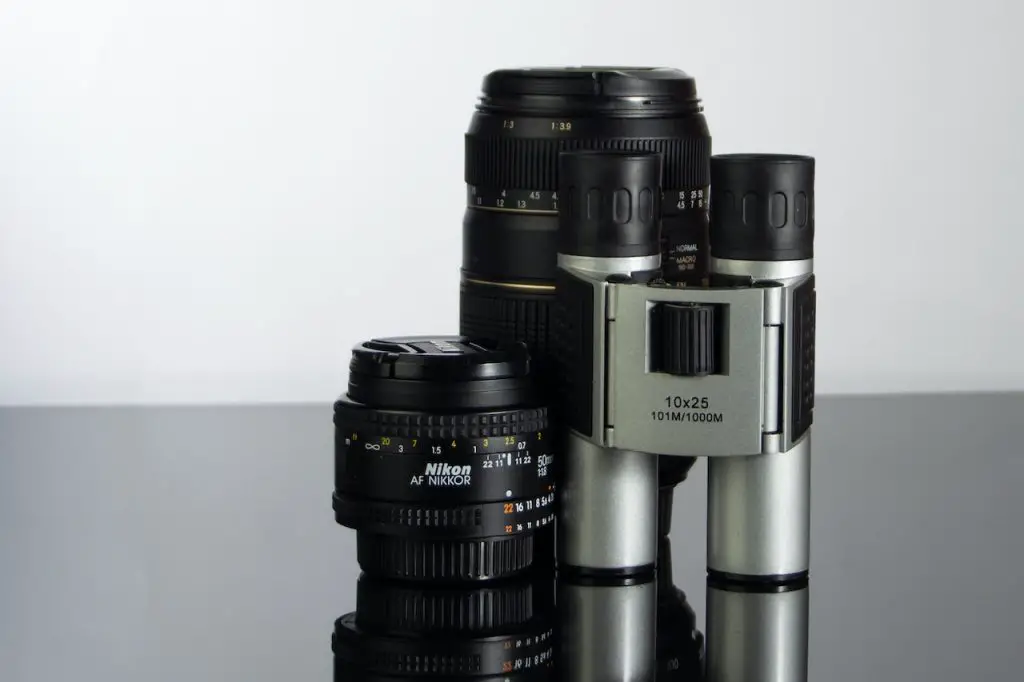
11. Buying Binoculars with a Digital Camera
While it may sound like a convenient and appealing combination, it’s a pitfall that beginners often fall into.
The idea of capturing stunning photos or videos directly through your binoculars may seem enticing, but the reality is often disappointing.
Binoculars with built-in digital cameras may compromise on both the optical performance and camera quality, leaving you with subpar results in both aspects.
Firstly, the optical quality of binoculars with digital cameras is typically not on par with dedicated binoculars.
These hybrid models often have lower-quality optics, resulting in reduced clarity, brightness, and overall image quality.
So, even if you manage to capture a photo or video, it may not match the breathtaking view you experienced through the binoculars.
Secondly, the camera component of binoculars with digital cameras tends to be of lower quality compared to dedicated digital cameras or smartphones.
The resolution, sensor size, and image processing capabilities are often limited, resulting in lower-resolution photos or videos that lack detail and may suffer from image noise.
Here is our Complete Guide On Digital Camera Binoculars: Are Digital Camera Binoculars Worth It?
What Should You Do if You Choose the Wrong Pair of Binoculars?
If you find yourself in the situation of choosing the wrong pair of binoculars, don’t despair!
There are steps you can take to rectify the situation and ensure that you end up with the right pair for your needs. Here’s what you should do:
Assess the specific reasons why the chosen binoculars are not suitable:
Take a moment to identify the aspects or features of the binoculars that are not meeting your expectations or requirements.
Is it the magnification, field of view, weight, or other factors? Understanding the specific shortcomings will help you make an informed decision on what to do next.
Determine if you can return or exchange the binoculars:
Check the return policy of the retailer or the manufacturer.
Many reputable sellers offer a return or exchange window, allowing you to swap the binoculars for a different model that better suits your needs.
Make sure to keep the original packaging and any accompanying accessories in good condition.
Consider selling or trading:
If returning or exchanging the binoculars is not an option, you can explore selling or trading them.
Online marketplaces, classified ads, or specialized forums dedicated to optics can be platforms to connect with potential buyers or individuals interested in trading for a different pair of binoculars.
Just ensure that the binoculars are in good condition and accurately described to potential buyers.
Learn from the experience:
Mistakes happen, and choosing the wrong pair of binoculars can be a valuable learning experience.
Reflect on the factors that led to the wrong decision and use this knowledge to make a more informed choice in the future. T
Take note of what features are essential for your specific use case and make a checklist to refer to when selecting binoculars next time.
Conclusion
Remember, selecting the right binoculars is crucial for unlocking extraordinary experiences.
By avoiding the costly errors we’ve discussed, you can ensure that your investment will bring you countless moments of awe and wonder in the great outdoors.
Always keep in mind the importance of understanding magnification, lens coatings, field of view, and other essential factors.
By striking the right balance between features, quality, and price, you’ll find the perfect pair of binoculars that will accompany you on your adventures for years to come.
